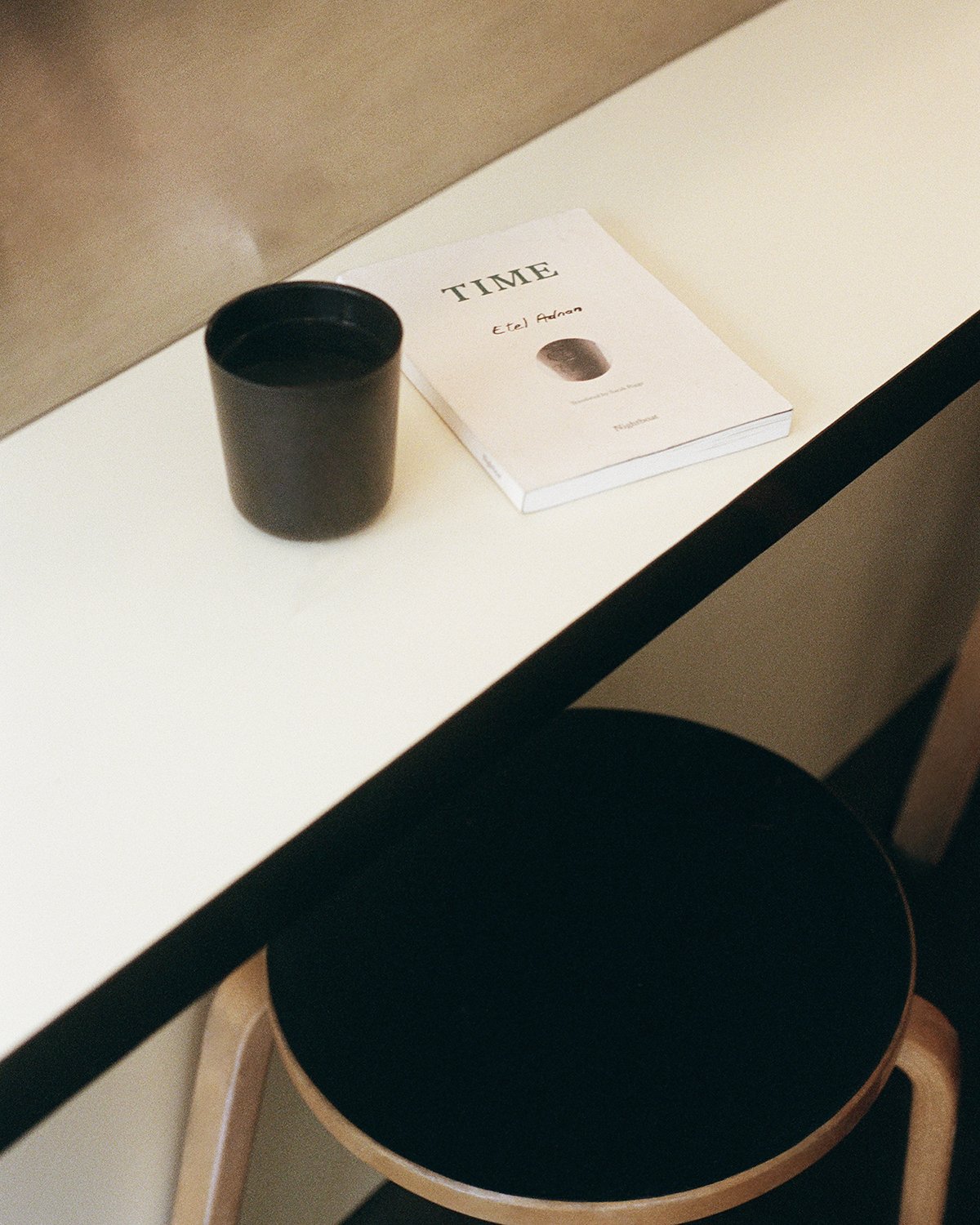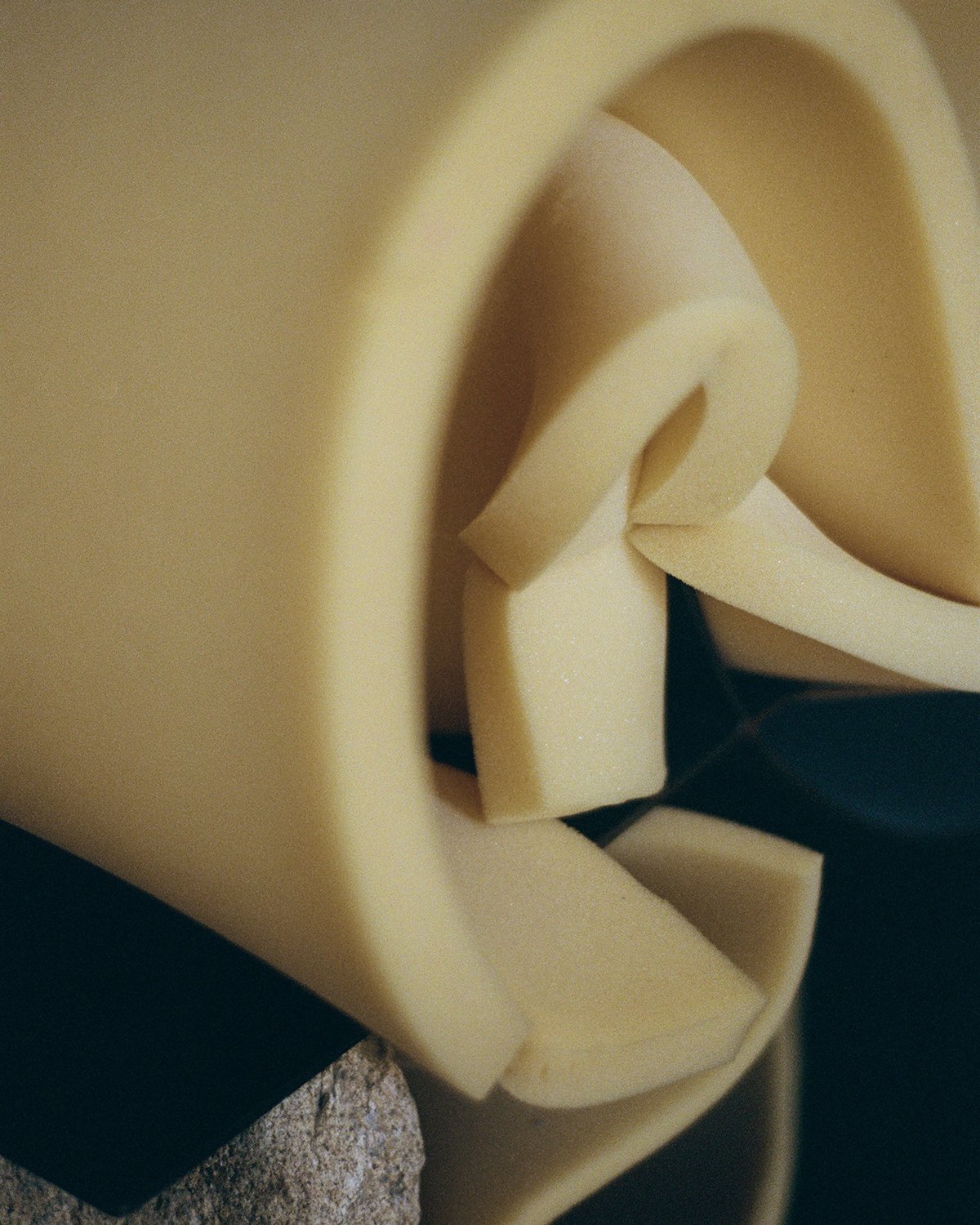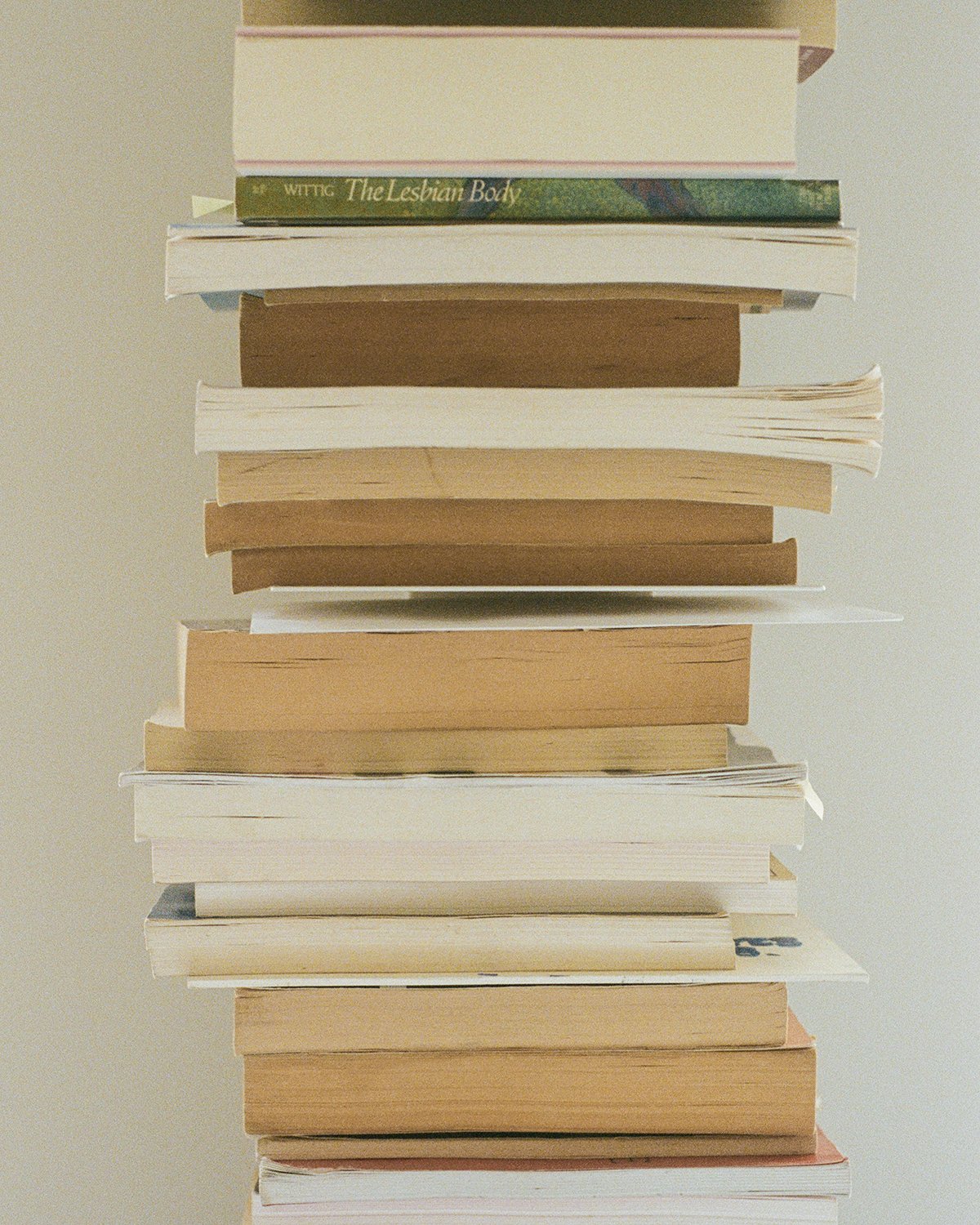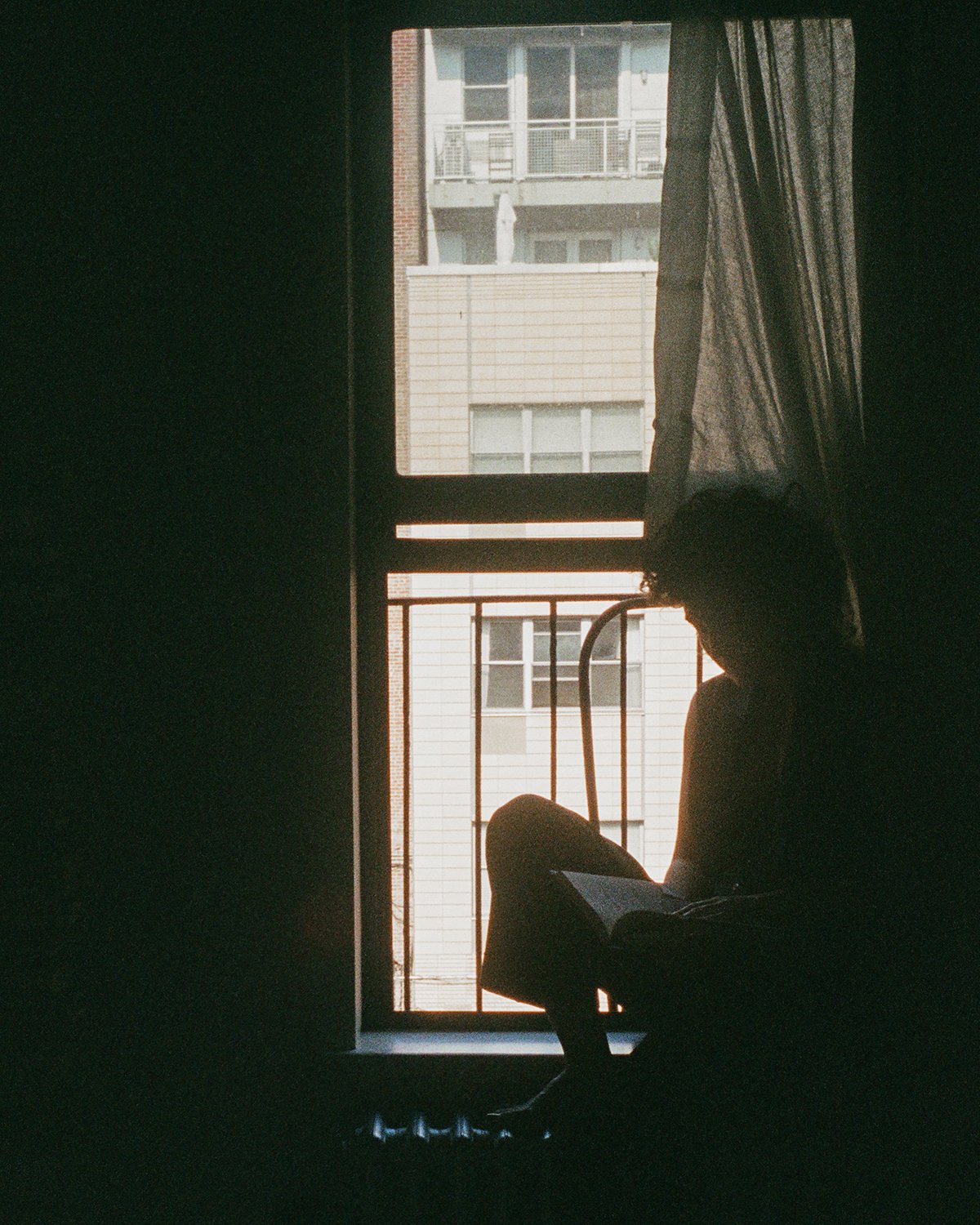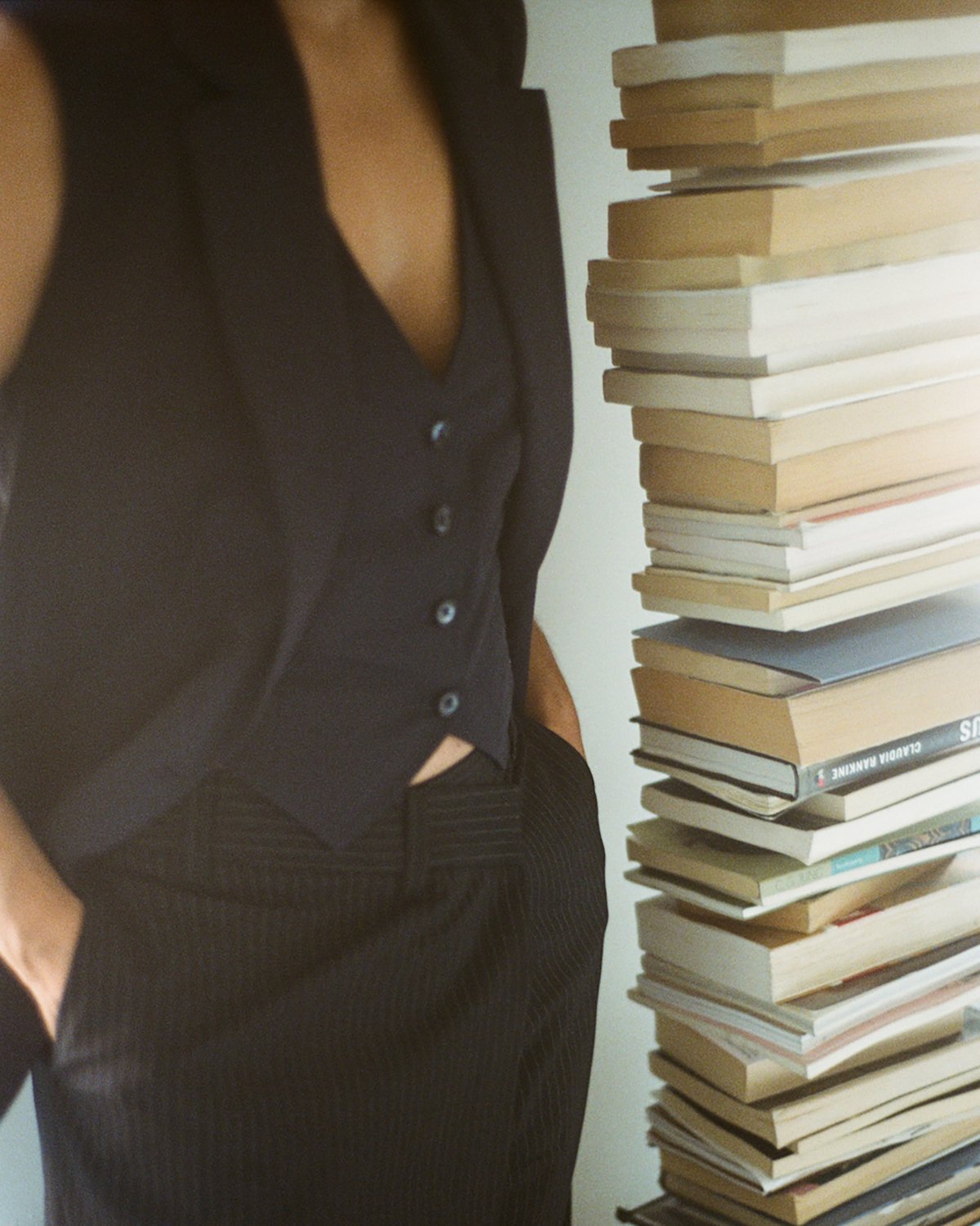Sara Lopez
Interview by Jennie Edgar
Photo by Dimanche Creative
March 1st, 2022
Divergent thinking, sporadic taste, and learning from others
The founder and designer of A—Company spoke with us about growing up with Latinx artists, making small books, conceptual clothing, and thinking about the soundtrack of childhood.
“It seems impossible, but there is a way- a way with which we are familiar. We know quite well in what likeness this tree is made, this tree that has grown within us, this most beautiful tree where the birds of the air come and perch. We know what is the most beautiful of all trees. ‘No forest bears its equal.’ Something still a little more frightful than a gibbet- that is the most beautiful of all trees. It was the seed of this tree that God placed within us, without our knowing what seed it was. If within us, without our knowing what seed it was. If we had known, we should not have said yes at the first moment it is this tree that has grown within us and has become ineradicable. Only a betrayal could uproot it.”
Love in the Void: Where God Finds Us by Simone Weil
What were the cultural resources of your childhood?
After about seven years old, I grew up in the hill country outside of San Antonio, TX. And though my parents weren’t involved in the arts, they kept a small group of Latinx artists and writers around them, who were quite influential. I was given a lot of freedom as a kid to explore, be messy and make, out of whatever was in front of me. I was inside of materials, and absorbed what was around. I wasn’t a big reader when I was young (to the contrary – I was a poor one) but I loved painting, drawing, and taking photos. My dad had a darkroom in our garage that was always a treasured space. My mom played guitar and sang a lot, mostly 70’s folk music, so that was the main soundtrack to my childhood.
Simply having examples of successful Latinx artists around allowed a possibility to exist. Their work has had greater meaning to me as an adult than I could have understood as a kid. And having the liberty to use my hands and make allowed for my own interests to take form.
I was keen on trying to understand environments, spaces, and clothes. I think that exploration gathered into a lot of my thinking today.
What’s a book you have and especially loved?
I’ve read a wide range of books, some of which I come back to many times over. One of them is Species of Spaces and Other Pieces by George Perec and Bluets by Maggie Nelson (believe everyone who reads this feels that way). And this past year, Shifting the Silence by Etel Adnan.
Another great title is I’m Very Into You by Mackenzie Wark and Kathy Acker.
I’m really absorbed, continually, with Andrea Zittel’s work and thinking around space and living and Franz Erhard Walther’s early works.
Tell us a bit about who you are and what you do.
I’m the founder and designer for A--Company, a concept-based brand in NYC. I’m looking at our relationship with the modern wardrobe through historical and cultural references, the body, space, and queerness.
I take one piece of the modern wardrobe as a starting point for each collection, though by the time the final collection is made the original garment might be quite obscure or abstract. It’s less didactic and more of a means to research and uncover new stories and silhouettes. I’m interested in the collaborative aspects of fashion, hence the name, and allowing A--Company to be a container for all people who are involved in large and small passing ways: including the wearer.
Sometimes you make zines! I discovered one by way of Anaise’s blog. Tell us about that project.
Oh! I’m so glad you found it. That was a really sweet project to make. I get frustrated with the limitations of access to luxury clothing, while also holding production practices I can stand behind, so it was a real treat to be able to offer something that was free and for everyone who wanted it. And especially in the middle of lockdown, after a video call with Renee at Anaise, I was seeking to offer a hand to people, some levity and touch. It was such a difficult time, it helped me a lot too to make something that wasn’t clothing. We didn’t need clothes, everyone was hurting, we needed community and something to hold. Or at least I know that’s what I needed.
I’ve been making small books, typically tangible, for friends/lovers over the years, sometimes just to share what I’ve been reading, and other times to communicate through images. It’s a simple and funny gesture really, kind of like scanning in all my dogears and underlined notes. They come together instinctually, when I see overlaps or interesting connections between all the books on my table. I like the tactility of booklets, the way you can start in the middle, flip backwards and through. The linearity can be disrupted which is exciting and not as easily possible through digital forms.
Tell us more about your creative practice.
My analyst recently called my thinking divergent (haha) and I’d say my practice is similar, pretty sprawling. But in fewer words, I begin researching through books, sometimes theory, sometimes specific novels, sometimes memoirs, also looking at film, art, et al. it really depends on the collection. And then I’m typically sketching or ‘sketching’ on the form through deconstruction or draping and go back and forth between the form and the page, while sourcing fabrics and finding the ones suitable for the design, or designing something for a specific fabric I love. I use my home as a kind of sketch pad away from the studio where I work out some non-clothing ideas that I think sometimes seep into the collections. After a lot of wide thinking and experimenting, the editing process is when the collection takes shape and gets more solidified. The editing continues in different forms until it’s finished. I’ve found it necessary for me to stay open and keep looking throughout the making of something.
Are there any books that inform your practice, aesthetics, and values as a designer?
Yes! Many, but to list a few favorites: The Straight Mind and Other Essays by Monique Wittig, Bluets and On Freedom by Maggie Nelson, Borderlands/La Frontera: The New Mestiza by Gloria Anzaldúa, Writing and Difference by Jacques Derrida, The Pleasure of the Text by Roland Barthes, Gender Trouble by Judith Butler, Touching Feeling & A Dialogue on Love by Edie Sedgwick (so good!), and lastly, Poetics of Space by Gaston Bachelard.
What are you working on now?
I just finished a special photo collaboration with Genesis Báez that we installed around the city, and now working to research the next collection.
How do you stay curious?
It's always hard to create space for ourselves, and my way probably doesn’t work for everyone, but I like to get up early and read an hour or two in the morning before going to the studio, when my mind is a bit soft but alert. And then if I have a free evening I typically read before bed. Weekends are for galleries and shows.. or if I need a break from work I go over to see some art and come back to work.
I’m kind of old school and still like going to the library or exploring archives. There’s some good and generous digital archives like the Lesbian Herstory Archive. Mostly building community with other curious people is the way to go, and the best place to get recommendations from. My rabbit holes are so random and typically come from something I read, or something someone mentioned that leads to all sorts of searches... all that we can do is stay open and follow what we find interesting.
I usually try to find books at used independent bookstores, Aeon in LES is great or Mast in East Village.
How do you describe your personal style?
Someone once described me as casual.. and I guess that’s accurate. My personal style is fairly uniform. Usually some version of jeans and t-shirt or jeans and a button down. I find the pieces that are comfortable and fit me well and I stick to it. I’m a pretty miserable shopper, so my wardrobe consists of A--Company and thrifted pieces I find while I’m researching for collections. But thrifted clothes are always so generous in how unique they are, and have already been felt, held, I like the overlapping of usage and story in them. .
Do you consider clothing to be a metaphor?
Of course. I think it holds a lot of metaphors. I’m most curious in how other wearers view and feel these, because I think it changes or can change.
“I like the tactility of booklets, the way you can start in the middle, flip backwards and through. The linearity can be disrupted, which is exciting and not as easily possible through digital forms. ”
Describe your perfect reading day.
I don’t really romanticize reading. But most frequently I read in Seward Park by my apartment in NYC. It’s sunny there on good days and comforting to find friends who are also there reading. I like being among life. I don’t often get pastries, but if I do, Mel on Ludlow and Canal is the place. And a coffee or tea from Grumpy.
Bars and restaurants are always sweet places to read.. with a martini is my preference. The back corner of the bar at Metrograph is nice. Also enjoy any of the community gardens around east village.
What special books have you received as gifts?
It feels a bit too intimate to go into any details, but the first book I was given by an important person to me was the Autobiography of Red by Anne Carson. Years later, I found myself walking the edges of a crater in California while carrying the book with me.
Another that comes to mind is a few weeks into the beginning of lockdown I received Moments of Being by Virginia Woolf in the mail by a dear friend who had to move back to her home country because of the pandemic.
What are you looking for when in search of a “good book?”
It depends when I’m looking - sometimes it’s for research or knowledge, other times for pleasure or comfort, like poetry or novels.
How would you describe your reading style?
Sporadic.
Why is reading worthwhile to you?
I like knowledge.
What’s one book you would recommend to our community?
Blue Pastures by Mary Oliver. It’s soft and swift to read.
But also – Sweet Nothings by Marlene Dumas is wonderful. And Love Letters between Virginia Woolf and Vita Sackville-West are so tender and funny.
What are you looking forward to reading next?
I just finished trans girl suicide museum by Hannah Bear which is brilliant, and I’ve been reading John Keen’s Punks: New & Selected Poems and love it.


